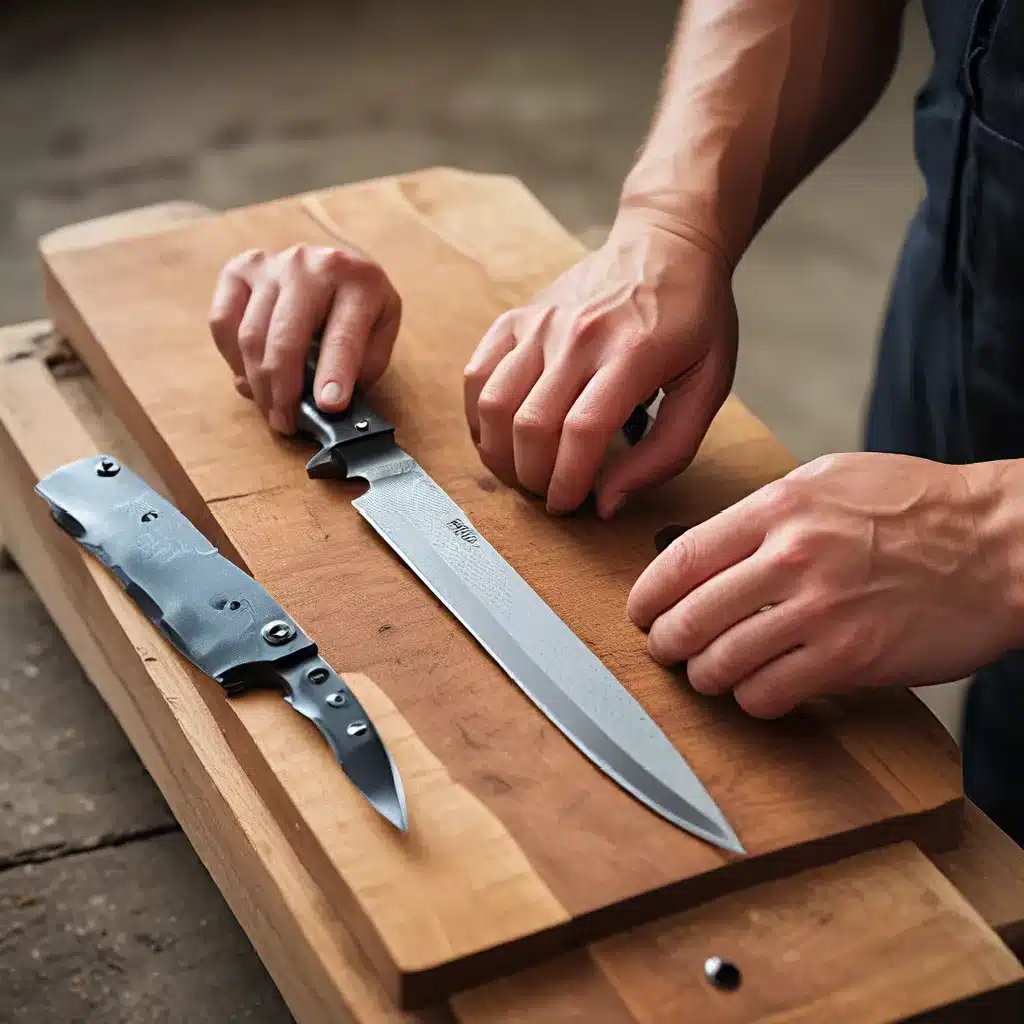
As a passionate knife enthusiast, I’ve spent countless hours perfecting the art of sharpening. It’s a skill that not only allows me to maintain the razor-sharp edges of my beloved blades but also connects me to a rich tradition of craftsmanship. In this article, I’m excited to share the secrets I’ve uncovered, guiding you through the fascinating world of knife sharpening.
The Importance of a Sharp Knife
Let’s start with a fundamental truth: a sharp knife is not only a pleasure to use but also a safer tool. Dull blades require more force, making them more prone to slipping and causing injuries. In contrast, a well-sharpened knife glides effortlessly through materials, allowing you to control the blade with precision and confidence.
But the benefits of a sharp knife extend beyond just safety. It can make a world of difference in your culinary or woodworking endeavors. A sharp knife, for instance, can slice through ingredients with clean, even strokes, preserving the delicate textures and flavors. In the workshop, a keen edge can transform the way you work with wood, making intricate carving and precise joinery a breeze.
The Myth and Mystery of Sharpening
Now, let’s address the elephant in the room: the misconceptions and uncertainties surrounding knife sharpening. I’ve encountered far too many people who are intimidated by the process, convinced that it’s a complex and daunting task. But the truth is, with the right techniques and a little practice, anyone can become a master sharpener.
One of the most persistent myths is the idea that achieving the perfect edge angle is a matter of precise measurement. As some experts suggest, the “right” angle is often less important than maintaining a consistent bevel throughout the sharpening process. The key is to develop a feel for the blade and trust your instincts.
Another common misconception is that sharpening is a one-and-done affair. In reality, the frequency and technique of sharpening can have a significant impact on the longevity and performance of a knife. Regularly honing and sharpening your blades can keep them in top condition, ensuring they serve you well for years to come.
Discovering the Secrets of Sharpening
So, how do you unlock the secrets of knife sharpening? Let me share the insights I’ve gained through my own journey of trial and error.
Mastering the Basics: Choosing the Right Tools
The foundation of successful sharpening lies in the tools you use. While a simple whetstone or manual sharpener can work well for many knives, high-quality sharpening systems like those from Herman Knives can take your sharpening game to the next level.
These systems often incorporate precision guides, allowing you to maintain a consistent angle with ease. They may also include a variety of stones or abrasives, catering to different blade types and desired edge profiles. Investing in the right tools can make the sharpening process more efficient, consistent, and enjoyable.
Developing the Technique: Finding Your Rhythm
Sharpening is as much a physical skill as it is a mental one. It’s about finding a rhythm, a flow, that allows you to work the blade with confidence and control. This comes through practice and a deep understanding of the mechanics involved.
As with planes and chisels, the key is to maintain a consistent bevel angle as you move the knife across the sharpening surface. This may take some trial and error, but once you’ve found your groove, the process becomes almost meditative.
Unlocking the Secrets: Honing and Maintenance
Sharpening is only half the battle; maintaining the edge is equally crucial. Regular honing with a high-quality steel or ceramic rod can help realign the blade’s edge, extending the time between full sharpening sessions. This simple yet effective technique can keep your knives in peak condition, ready to tackle any task with precision and ease.
Additionally, proper storage and care can play a significant role in preserving the sharpness of your blades. Storing knives in a protective sheath or block, and avoiding contact with hard surfaces, can prevent unnecessary dulling and damage.
Embracing the Journey of Sharpening
As I’ve discovered, the art of knife sharpening is not just about creating a keen edge – it’s about developing a deep appreciation for the craft and a connection to the tools we use. It’s a journey that has enriched my life in ways I never could have imagined.
Along the way, I’ve encountered a wealth of fascinating information, from the ongoing debates surrounding bevel angles to the evolving research on the science of sharp edges. And I’ve found that the more I learn, the more I realize there is still to discover.
So, I encourage you to embrace the journey of sharpening, to let your curiosity guide you, and to never stop exploring the secrets of this timeless art. Who knows what other delights and surprises await as you sharpen your skills and your knives?


